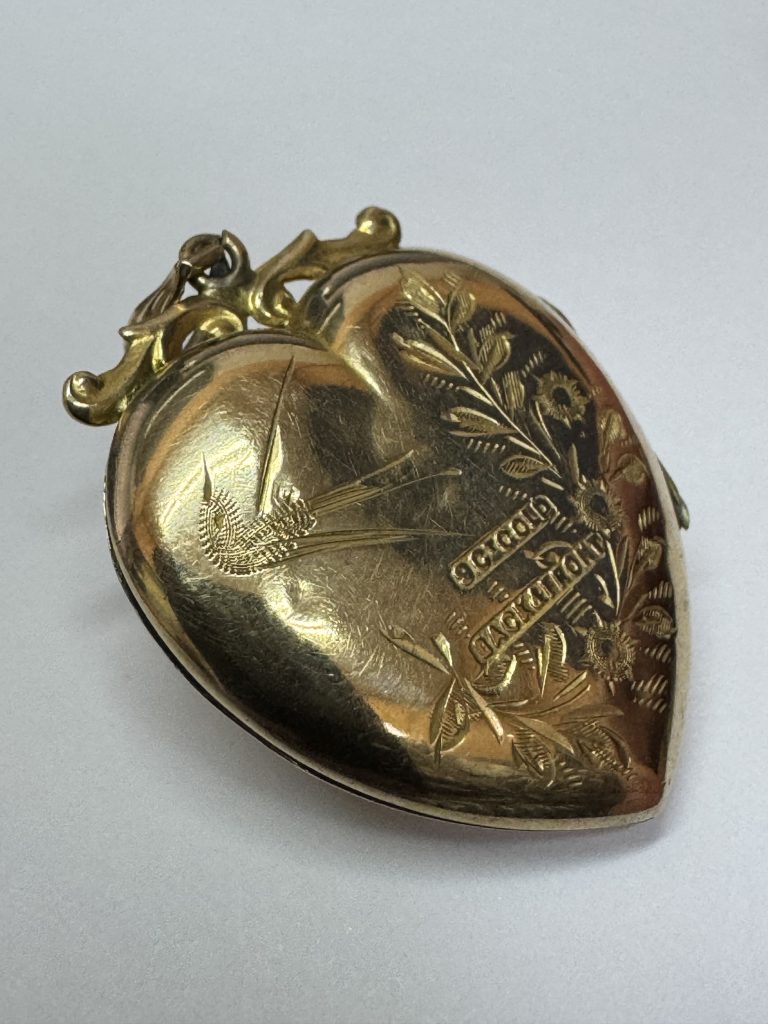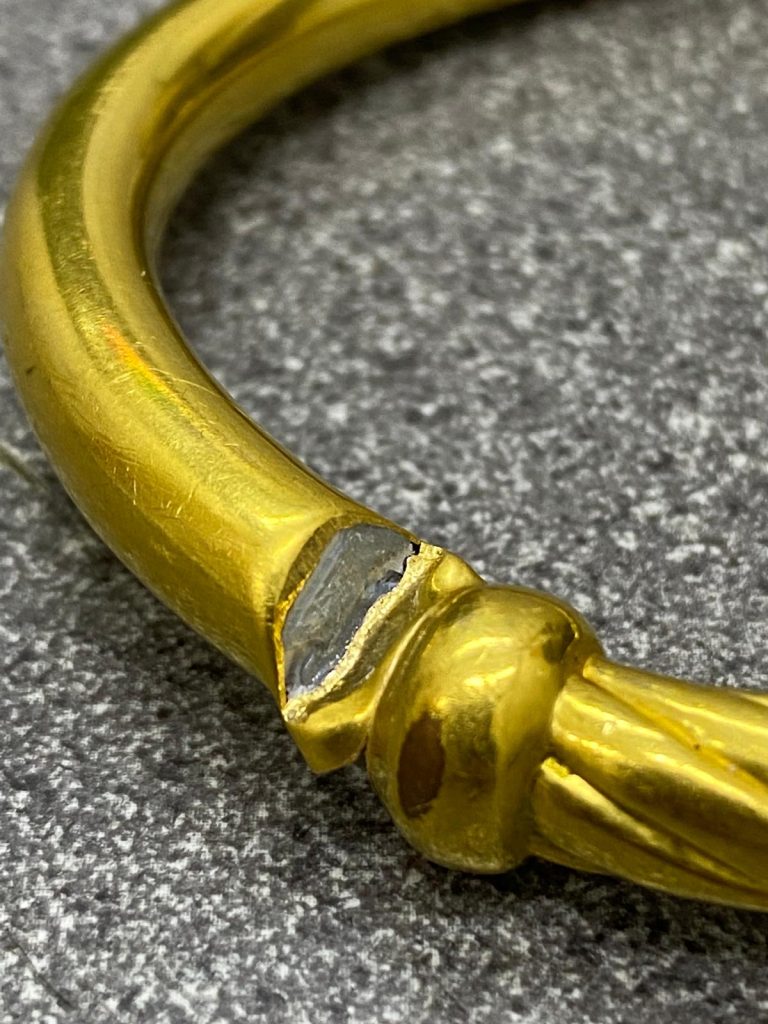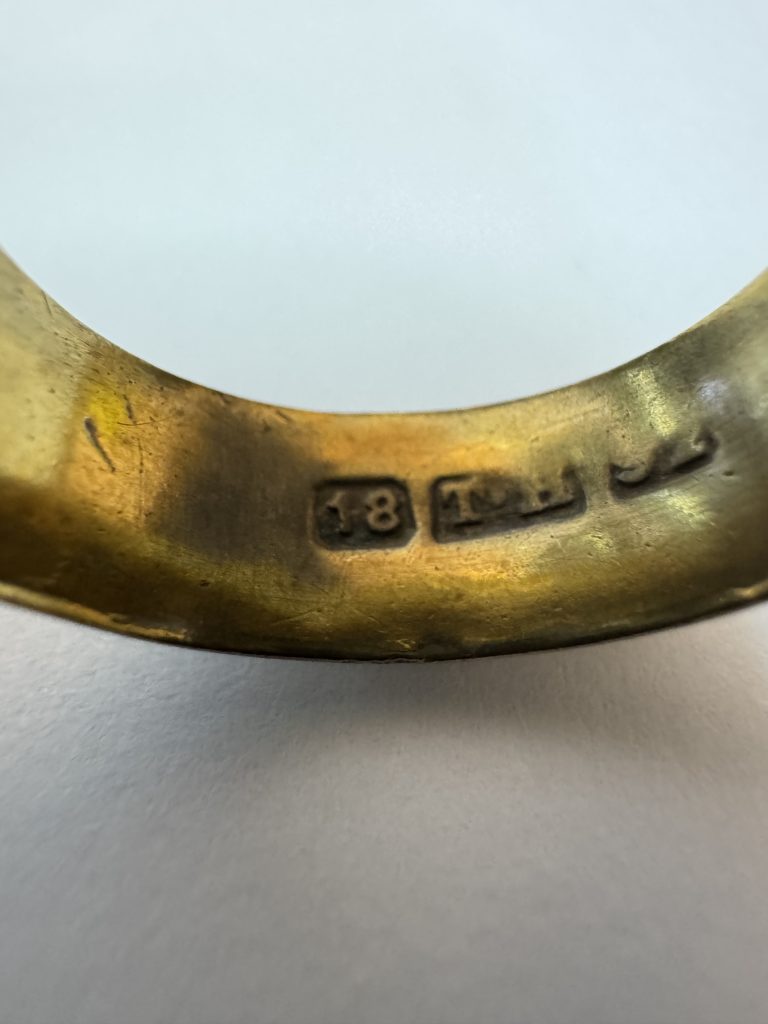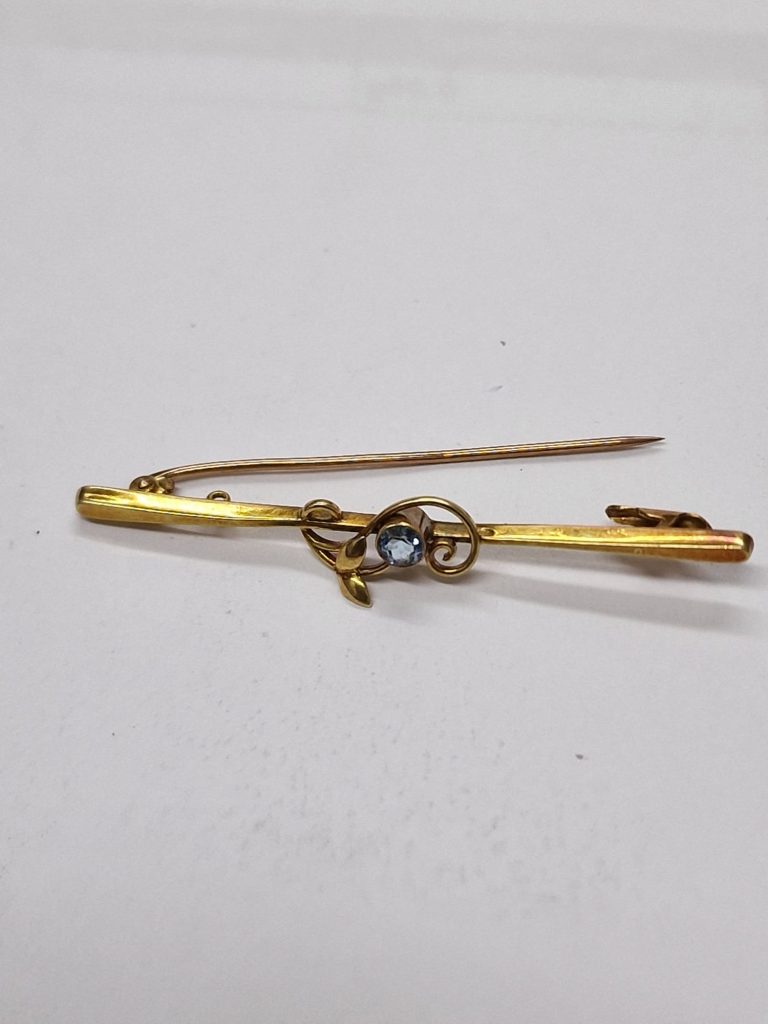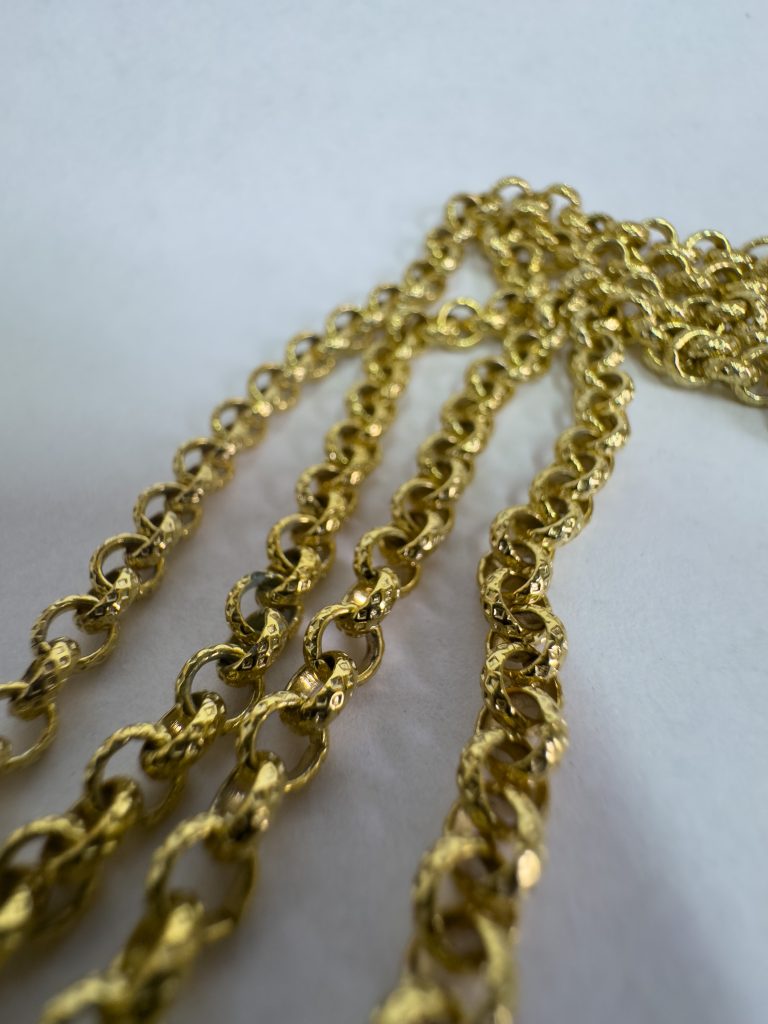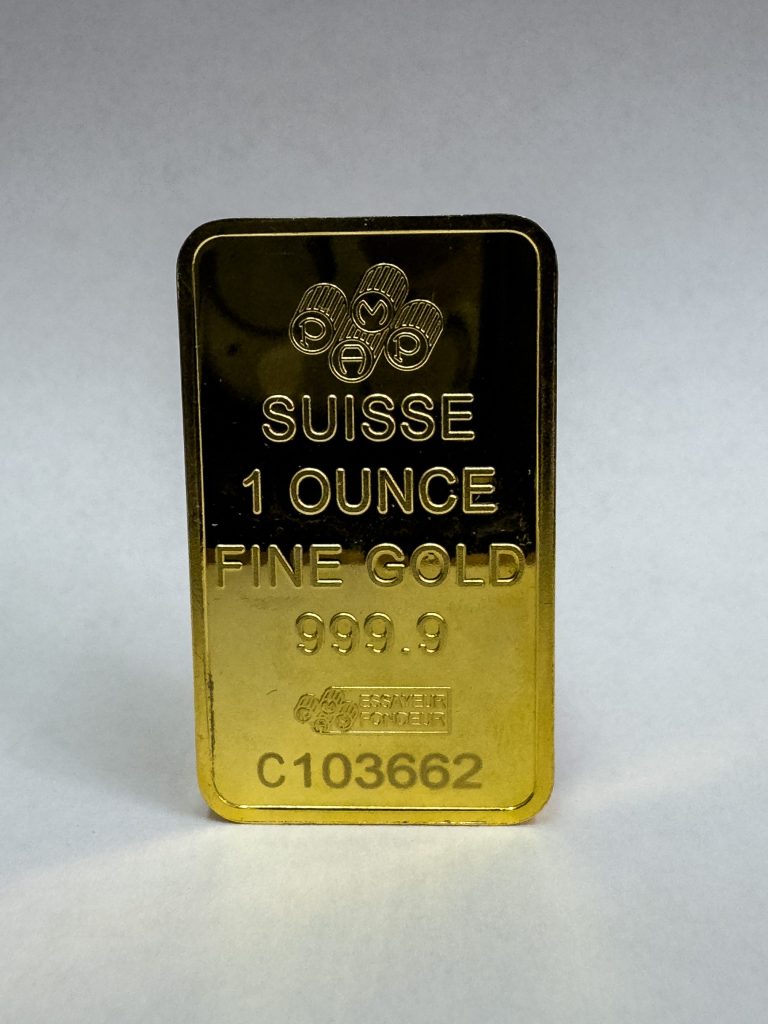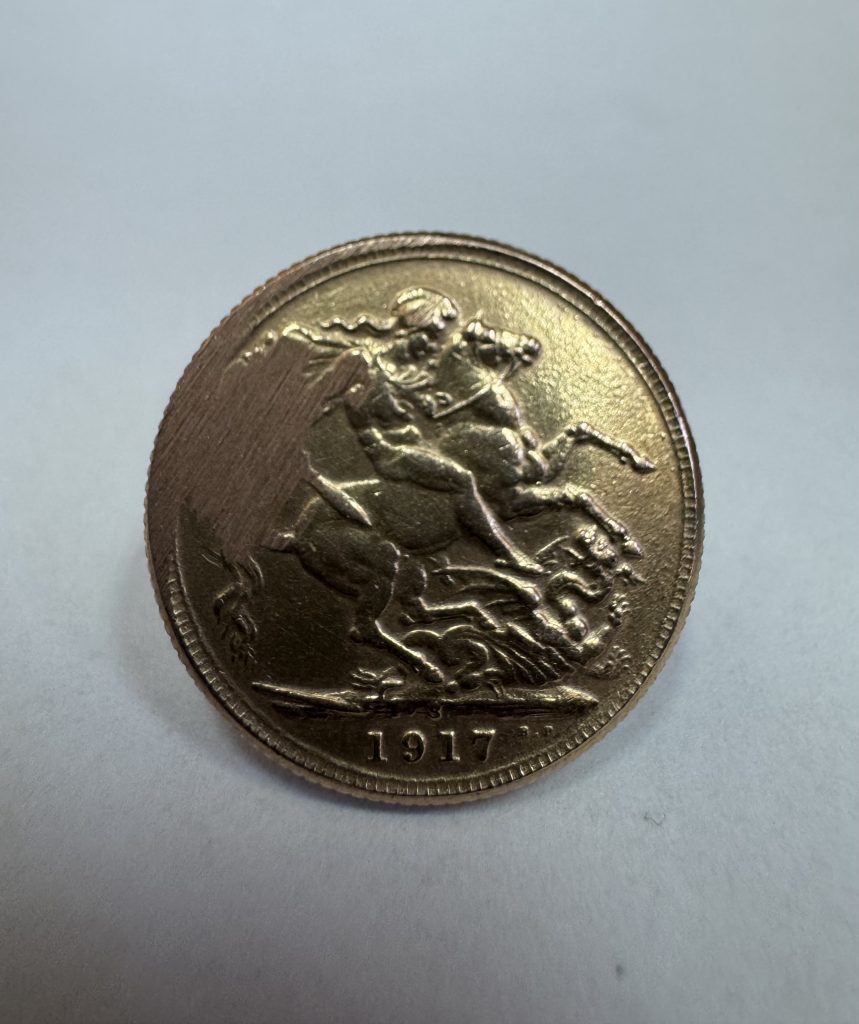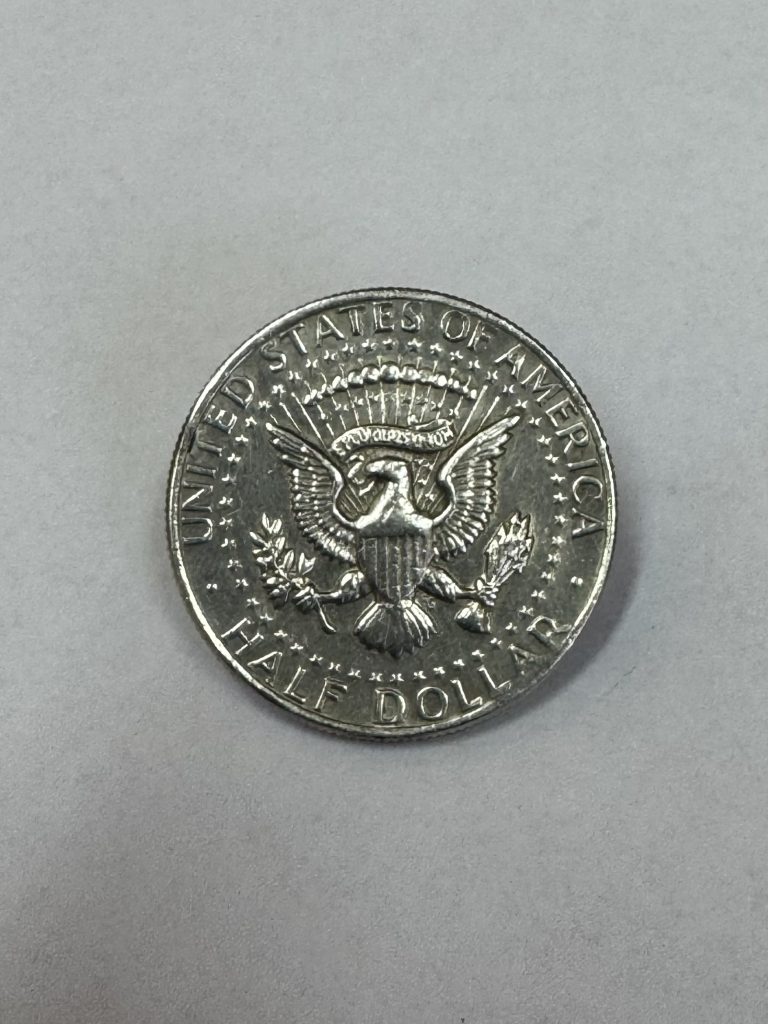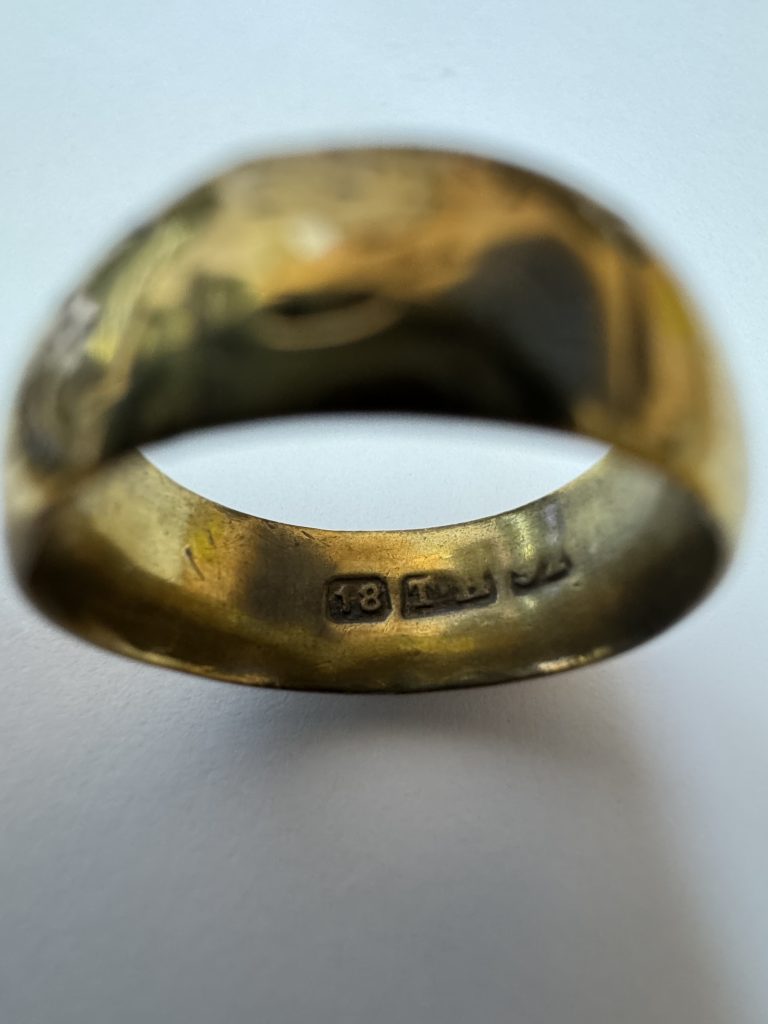
Stamped Vs Hallmarked
Many people assume that a stamp on a piece of jewellery like “18K” or “925” is a guarantee of authenticity. Unfortunately, that’s not the case. This page aims to highlight some differences between simple stamps and official hallmarks, and why relying solely on a stamp can lead to costly mistakes.
We often see customers bring in items stamped as gold that turn out to be fakes. Stamps can be easily forged and offer little to no legal protection. A hallmark, on the other hand, provides a far more reliable indication of a piece’s authenticity and precious metal content.
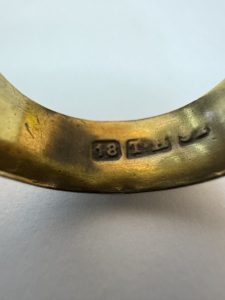
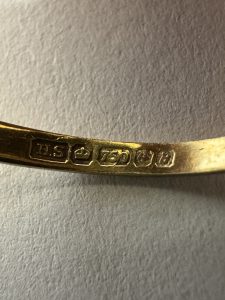
On the left is a ring that has been stamped 18, when it is made of copper. On the right is a standard hallmark, in this case there are 5 marks, starting on the left we can see:
- Sponsor’s Mark: This shows which company submitted the article for hallmarking.
- Fineness Symbol (optional): A traditional fineness symbol, such as a crown for gold.
- Fineness Mark: Shows the precious metal content, in this case 750 (75.0% | 18ct).
- Assay Office Mark: Identifies which assay office tested and hallmarked the article (Birmingham Anchor).
- Date Letter (optional): Signifies the year the item was hallmarked.
Under current UK hallmarking standards, the Sponsor’s Mark, Fineness Mark, and Assay Office Mark are all compulsory. However, hallmarking practices have evolved over time, so older jewellery may feature different marks. For a deeper understanding of UK hallmarking standards, we recommend reviewing the official Hallmarking Guidance Notes on the gov.uk website.
Click here to go back to the Fakes front page, or browse more of the fakes we have below.


